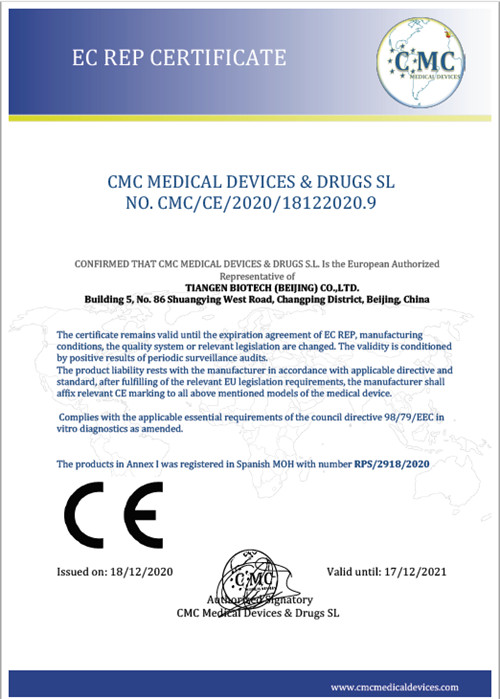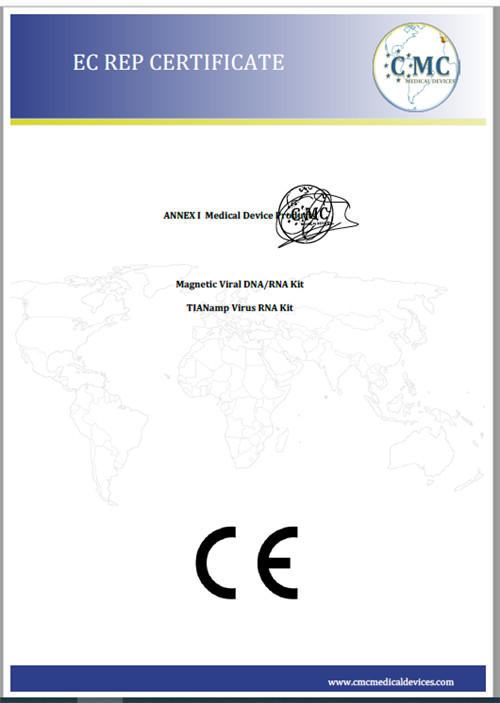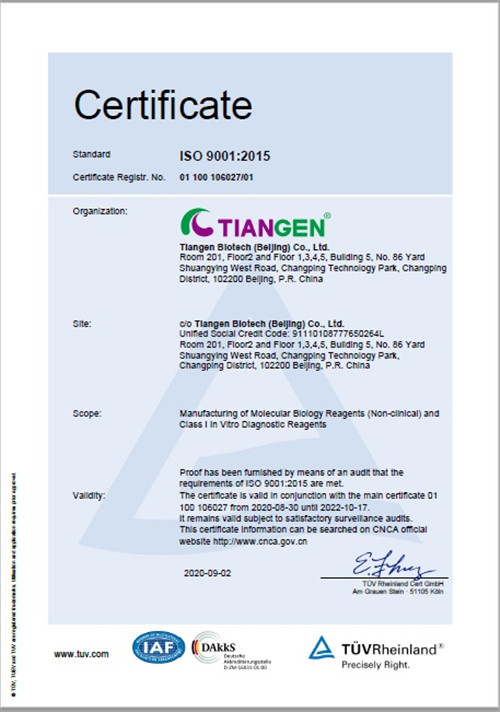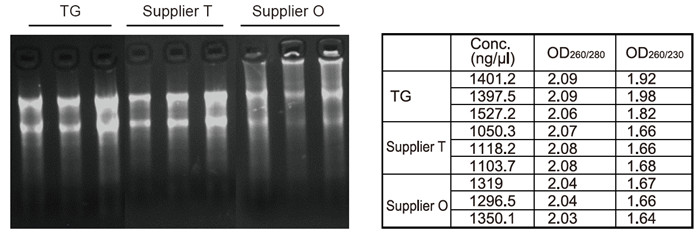 |
Total RNA was extracted from 20 mg rat liver with TIANGEN Magnetic Tissue/Cell/Blood Total RNA Kit and the relevant products from other suppliers. 5 μl of 200 μl eluate was loaded to 1% agarose gel electrophoresis, 6 V/cm. Conclusion: The extraction yield, purity and stability of TIANGEN Magnetic Tissue/Cell/Blood Total RNA Kit are better than that of other suppliers. |
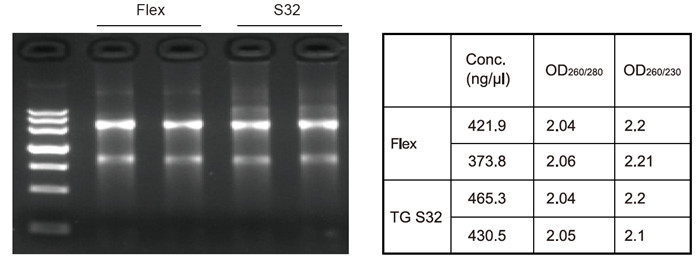 |
Total RNA was extracted from 20 mg of rat kidney with TIANGEN Magnetic Tissue/Cell/Blood Total RNA Kit in TIANGEN TGuide S32 or Thermo Kingfisher Flex96 respectively. 5 μl of 200 μl eluate was loaded to 1% agarose gel electrophoresis, 6 V/cm. Marker: TIANGEN D15000 DNA Marker. Conclusion: Magnetic Tissue/Cell/Blood Total RNA Kit has good extraction yield and purity in different automated extractors. |
Magnetic Tissue/Cell/Blood Total RNA Kit
Features
■ Easy and fast: Ultrapure total RNA can be obtained within 60 min.
■ High throughput: It can meet the requirements of manual extraction as well as batch extraction on various high-throughput platforms.
■ Safe and non-toxic: No reagent such as phenol/chloroform is needed.
Specification
Type: Magnetic beads type extraction.
Sample: Tissues, cells and blood.
Target: Total RNA
Starting volume: 5-20 mg, not exceed 1×107, 0.1-1.5 ml
Operation time: 60 min
Downstream applications: RT-PCR/RT-qPCR, NGS library construction, etc.
All the products can be customized for ODM/OEM. For details, please click Customized Service(ODM/OEM)
Experimental Examples
FAQ
A-1 Cell lysis or homogenization not sufficient
---- Reduce sample usage, increase the amount of lysis buffer, increase homogenization and lysis time.
A-2 Sample amount is too large
---- Reduce the amount of sample used or increase the amount of lysis buffer.
A-1 Insufficient cell lysis or homogenization
---- Reduce sample usage, increase the amount of lysis buffer, increase homogenization and lysis time.
A-2 Sample amount is too large
----Please refer to the maximum processing capacity.
A-3 RNA is not eluted completely from the column
---- After adding RNase-Free water, leave it for a few minutes before centrifuging.
A-4 Ethanol in the eluent
---- After rinsing, centrifuge again and remove the washing buffer as much as possible.
A-5 Cell culture medium is not completely removed
---- When collecting cells, please make sure to remove the culture medium as much as possible.
A-6 The cells stored in RNAstore are not effectively centrifuged
----RNAstore density is greater than the average cell culture medium; so the centrifugal force should be increased. It is suggested to centrifuge at 3000x g.
A-7 Low RNA content and abundance in the sample
---- Use a positive sample to determine if the low-yield is caused by the sample.
A-1 The material is not fresh
---- Fresh tissues should be stored in liquid nitrogen immediately or immediately put into the RNAstore reagent to ensure the extraction effect.
A-2 Sample amount is too large
---- Reduce sample amount.
A-3 RNase contamination
----Although the buffer provided in the kit does not contain RNase, it is easy to contaminate RNase during extraction process and should be handled with care.
A-4 Electrophoresis pollution
---- Replace the electrophoresis buffer and make sure the consumables and Loading Buffer are free of RNase contamination.
A-5 Too much loading for electrophoresis
---- Reduce the amount of sample loading, the loading of each well should not exceed 2 μg.
A-1 Sample amount is too large
---- Reduce sample amount.
A-2 Some samples have high DNA content and can be treated with DNase.
----Perform RNase-Free DNase treatment to the obtained RNA solution, and the RNA can be directly used for subsequent experiments after treatment, or can be further purified by RNA purification kits.
For glasswares, baked at 150°C for 4 h. For plastic containers, immersed in 0.5 M NaOH for 10 min, then thoroughly rinsed with RNase-free water and then sterilize to completely remove RNase. The reagents or solutions used in the experiment, especially water, must be free of RNase. Use RNase-free water for all reagent preparations (add water to a clean glass bottle, add DEPC to a final concentration of 0.1% (V/V), shake overnight and autoclave).
Products categories
WHY CHOOSE US
Since its establishment, our factory has been developing first world class products with adhering the principle
of quality first. Our products have gained excellent reputation in the industry and valuabletrusty among new and old customers..

